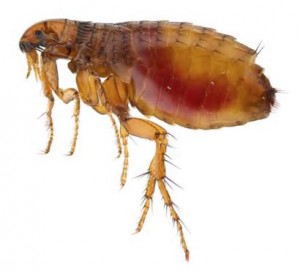 The length of the flea’s life cycle depends on temperature, humidity level, and the availability of a host animal, but can last up to one year. It begins when a flea lays eggs in your pet’s hair coat. Eggs are not sticky and fall from the pet’s hair coat and often land on and in carpets, floor cracks, and furniture. The eggs hatch and develop into larvae in 2-5 days. The larvae avoid light and migrate to dark places, like under the furniture, in cracks and crevices and around baseboards. The larvae eventually spin cocoons and can remain dormant for many months. There is no available flea treatment to penetrate and kill the pupa cocoon.
The length of the flea’s life cycle depends on temperature, humidity level, and the availability of a host animal, but can last up to one year. It begins when a flea lays eggs in your pet’s hair coat. Eggs are not sticky and fall from the pet’s hair coat and often land on and in carpets, floor cracks, and furniture. The eggs hatch and develop into larvae in 2-5 days. The larvae avoid light and migrate to dark places, like under the furniture, in cracks and crevices and around baseboards. The larvae eventually spin cocoons and can remain dormant for many months. There is no available flea treatment to penetrate and kill the pupa cocoon.
Once the adult flea comes out of the pupa cocoon, it can survive for days without a host. After attaching to a dog or cat, the adult flea begins feeding on the animal’s blood. Adult fleas typically live on the pet for 3 days-but that is plenty of time for fleas to lay eggs and start the cycle all over again. One female flea can lay as many as 50 eggs a day, so a minor flea problem can get out of hand quickly.
Becoming Flea Free
 Flea control products for pets work in different ways with variable effectiveness and kill fleas at different stages in the life cycle. To be most effective, it is sometimes best to use a combination of products. Controlling and eliminating fleas can be difficult because most evidence of fleas is not found on the animal but around the home. Be patient, it will take a minimum of 90 days to eradicate fleas if you follow all the procedures listed below. Flea control products for pets work in different ways with variable effectiveness and kill fleas at different stages in the life cycle. To be most effective, it is sometimes best to use a combination of products. Controlling and eliminating fleas can be difficult because most evidence of fleas is not found on the animal but around the home. Be patient, it will take a minimum of 90 days to eradicate fleas if you follow all the procedures listed below. |
 1. Treat all the pets in the household, even the ones that don’t go outside, with a flea product that kills fleas fast, before they can lay eggs. Treat all of your pets for at least 3 consecutive months to break the life cycle of the flea. 1. Treat all the pets in the household, even the ones that don’t go outside, with a flea product that kills fleas fast, before they can lay eggs. Treat all of your pets for at least 3 consecutive months to break the life cycle of the flea. |
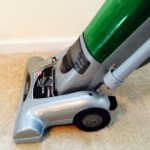 2. Vacuum carpets and furniture daily. Dispose of the carpet cleaner’s contents outside immediately after vacuuming. 2. Vacuum carpets and furniture daily. Dispose of the carpet cleaner’s contents outside immediately after vacuuming. |
 3. Clean surfaces where your pet spends most of their time. 3. Clean surfaces where your pet spends most of their time. |
| 4. Launder all bedding that the pet sleeps on.
5. Spray carpets with an insecticide that has a growth regulator to help break the life cycle of the flea.
Use chemicals with caution and read labels.
6. Treat outdoors. Sunlight kills fleas, so they are more likely to be found in shaded areas, such as under porches and decks.
7. If you bathe your pet and are using a topical flea product, use a soap-free shampoo. Using certain shampoos, Dawn dish detergent or baby shampoo will strip the topical flea product off your pet. Flea shampoos should not be used in conjunction with topical flea products. |
![v3dtube[1]](http://box5557.temp.domains/~beechmo2/wp-content/uploads/2015/01/v3dtube1-300x71.png) 8. We carry both topical and oral flea medications that work very well in eradicating fleas. For dogs we have several products, both topical and oral, that we recommend for flea and tick control. Vectra3D is a spot- on treatment that repels and kills fleas and ticks, last for 30 days and can be sold at our clinic without a prescription. 8. We carry both topical and oral flea medications that work very well in eradicating fleas. For dogs we have several products, both topical and oral, that we recommend for flea and tick control. Vectra3D is a spot- on treatment that repels and kills fleas and ticks, last for 30 days and can be sold at our clinic without a prescription. |
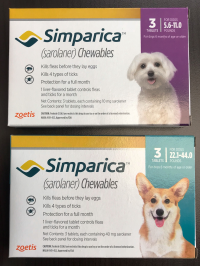 Symparica is a chewable tablet that is given orally once every 30 days to kill fleas and ticks, and is a prescription medication. Symparica is a chewable tablet that is given orally once every 30 days to kill fleas and ticks, and is a prescription medication. |
| Trifexis and Sentinel are oral heartworm medications that also control intestinal parasites and fleas, last for 30 days, and are prescription medications. |
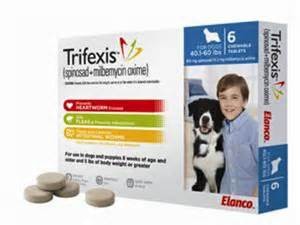 |
![sentinel-product-packages[1]](http://box5557.temp.domains/~beechmo2/wp-content/uploads/2015/01/sentinel-product-packages1-300x143.png) |
 For cats, we recommend Vectra, a spot- on flea treatment that last for 30 days, no prescription needed. For cats, we recommend Vectra, a spot- on flea treatment that last for 30 days, no prescription needed. |
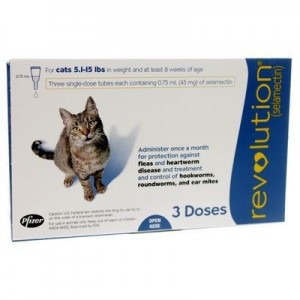 We also have Revolution a spot- on heartworm medication that also controls intestinal parasite, ear mites and fleas, ticks and is a prescription medication. We also have Revolution a spot- on heartworm medication that also controls intestinal parasite, ear mites and fleas, ticks and is a prescription medication. |
Our staff will be happy to help you decide which product is right for you and your pet(s).
 The length of the flea’s life cycle depends on temperature, humidity level, and the availability of a host animal, but can last up to one year. It begins when a flea lays eggs in your pet’s hair coat. Eggs are not sticky and fall from the pet’s hair coat and often land on and in carpets, floor cracks, and furniture. The eggs hatch and develop into larvae in 2-5 days. The larvae avoid light and migrate to dark places, like under the furniture, in cracks and crevices and around baseboards. The larvae eventually spin cocoons and can remain dormant for many months. There is no available flea treatment to penetrate and kill the pupa cocoon.
The length of the flea’s life cycle depends on temperature, humidity level, and the availability of a host animal, but can last up to one year. It begins when a flea lays eggs in your pet’s hair coat. Eggs are not sticky and fall from the pet’s hair coat and often land on and in carpets, floor cracks, and furniture. The eggs hatch and develop into larvae in 2-5 days. The larvae avoid light and migrate to dark places, like under the furniture, in cracks and crevices and around baseboards. The larvae eventually spin cocoons and can remain dormant for many months. There is no available flea treatment to penetrate and kill the pupa cocoon. Flea control products for pets work in different ways with variable effectiveness and kill fleas at different stages in the life cycle. To be most effective, it is sometimes best to use a combination of products. Controlling and eliminating fleas can be difficult because most evidence of fleas is not found on the animal but around the home. Be patient, it will take a minimum of 90 days to eradicate fleas if you follow all the procedures listed below.
Flea control products for pets work in different ways with variable effectiveness and kill fleas at different stages in the life cycle. To be most effective, it is sometimes best to use a combination of products. Controlling and eliminating fleas can be difficult because most evidence of fleas is not found on the animal but around the home. Be patient, it will take a minimum of 90 days to eradicate fleas if you follow all the procedures listed below. 1. Treat all the pets in the household, even the ones that don’t go outside, with a flea product that kills fleas fast, before they can lay eggs. Treat all of your pets for at least 3 consecutive months to break the life cycle of the flea.
1. Treat all the pets in the household, even the ones that don’t go outside, with a flea product that kills fleas fast, before they can lay eggs. Treat all of your pets for at least 3 consecutive months to break the life cycle of the flea. 2. Vacuum carpets and furniture daily. Dispose of the carpet cleaner’s contents outside immediately after vacuuming.
2. Vacuum carpets and furniture daily. Dispose of the carpet cleaner’s contents outside immediately after vacuuming. 3. Clean surfaces where your pet spends most of their time.
3. Clean surfaces where your pet spends most of their time.![v3dtube[1]](http://box5557.temp.domains/~beechmo2/wp-content/uploads/2015/01/v3dtube1-300x71.png) 8. We carry both topical and oral flea medications that work very well in eradicating fleas. For dogs we have several products, both topical and oral, that we recommend for flea and tick control. Vectra3D is a spot- on treatment that repels and kills fleas and ticks, last for 30 days and can be sold at our clinic without a prescription.
8. We carry both topical and oral flea medications that work very well in eradicating fleas. For dogs we have several products, both topical and oral, that we recommend for flea and tick control. Vectra3D is a spot- on treatment that repels and kills fleas and ticks, last for 30 days and can be sold at our clinic without a prescription. Symparica is a chewable tablet that is given orally once every 30 days to kill fleas and ticks, and is a prescription medication.
Symparica is a chewable tablet that is given orally once every 30 days to kill fleas and ticks, and is a prescription medication.
![sentinel-product-packages[1]](http://box5557.temp.domains/~beechmo2/wp-content/uploads/2015/01/sentinel-product-packages1-300x143.png)
 For cats, we recommend Vectra, a spot- on flea treatment that last for 30 days, no prescription needed.
For cats, we recommend Vectra, a spot- on flea treatment that last for 30 days, no prescription needed. We also have Revolution a spot- on heartworm medication that also controls intestinal parasite, ear mites and fleas, ticks and is a prescription medication.
We also have Revolution a spot- on heartworm medication that also controls intestinal parasite, ear mites and fleas, ticks and is a prescription medication.
